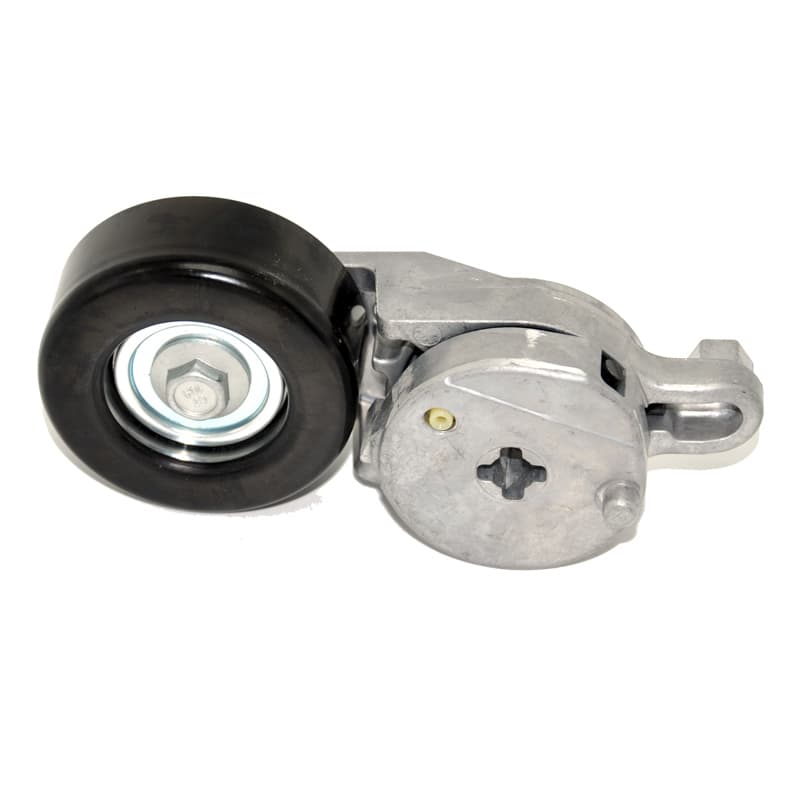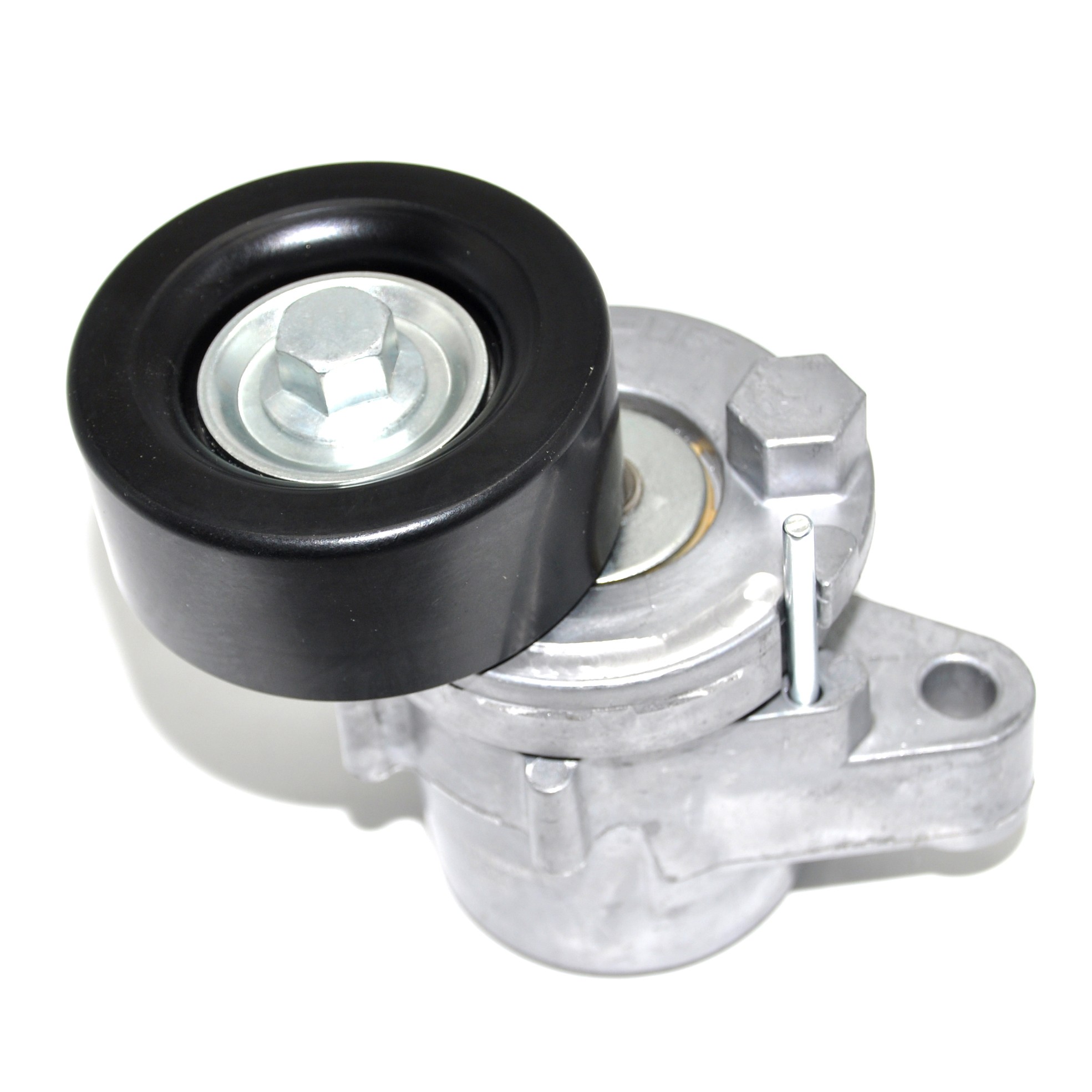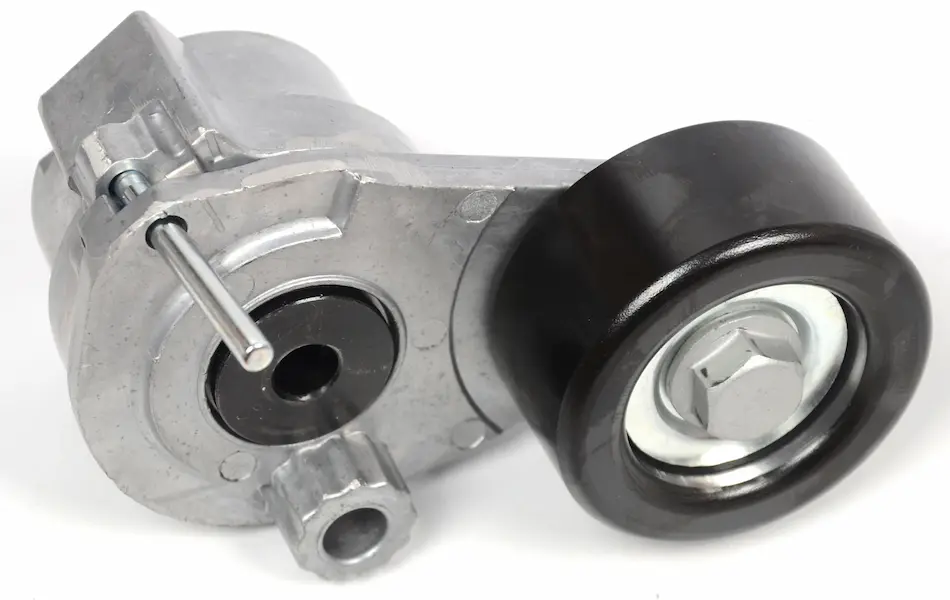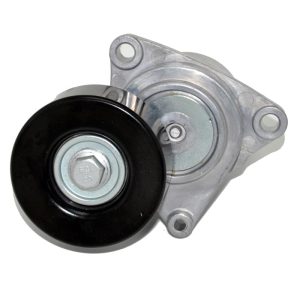În domeniul automobilelor și al utilajelor industriale, rolul scripeților întinzători și al scripeților întinzători este crucial, dar adesea ignorat. Aceste componente, deși de dimensiuni mici, joacă un rol esențial în funcționalitatea și longevitatea diferitelor sisteme, în special în mecanismele acționate de curele. Înțelegerea a ceea ce piese tensor și scripete modul în care acestea funcționează și importanța lor sunt esențiale pentru oricine este implicat în întreținerea, repararea sau proiectarea sistemelor mecanice. Acest articol analizează în detaliu aceste componente, explorând tipurile, funcțiile și impactul pe care îl au asupra performanței generale a sistemului.
Noțiuni de bază: Înțelegerea pieselor de întinzător și de scripete întinzătoare
Înainte de a intra în detalii, este important să înțelegeți conceptele de bază ale scripeților întinzători și ai scripeților întinzători. Ambele componente fac parte integrantă din buna funcționare a sistemelor acționate prin curea, care sunt comune în motoarele auto și în diverse mașini industriale.
- Polei de tensionare: Poleiul de întindere este o componentă proiectată pentru a menține tensiunea corespunzătoare pe o curea în cadrul unui sistem acționat de curea. De obicei, este încărcat cu arc sau acționat hidraulic, ceea ce îi permite să se regleze automat pentru a compensa uzura și alungirea curelei în timp. Prin menținerea tensiunii corecte, scripetele de tensionare asigură funcționarea lină și eficientă a curelei, prevenind alunecarea, zgomotul și uzura prematură.
- Polei de transmisie: Pe de altă parte, un scripete idler are un scop diferit. Acesta este utilizat pentru a ghida sau redirecționa cureaua într-o anumită direcție. Deși nu contribuie la menținerea tensiunii, poleiul de întindere asigură că cureaua urmează calea corectă în jurul diferitelor componente ale motorului, cum ar fi alternatorul, pompa de apă sau pompa servodirecției. De obicei, polițele de întindere sunt fixate în poziție și nu pot regla tensiunea.
Importanța pieselor pentru scripeți întinzători și întinzători
Atât piesele tensorului, cât și cele ale scripetelui sunt esențiale pentru funcționarea eficientă a sistemelor acționate prin curea. O funcționare defectuoasă sau o defecțiune la oricare dintre aceste componente poate duce la probleme semnificative, inclusiv pierderea puterii, supraîncălzirea motorului sau chiar defectarea completă a sistemului.
- Asigurarea tensionării corecte a centurii: Rolul principal al scripetelui întinzător este de a menține nivelul corect de tensiune pe curea. O curea slăbită poate aluneca, cauzând o pierdere de putere pentru componentele acționate, în timp ce o curea prea tensionată poate duce la o uzură excesivă a curelei și a scripeților în sine. Poleiul întinzător se reglează automat pentru a menține tensiunea curelei în intervalul optim, asigurând funcționarea fără probleme și prelungind durata de viață a curelei.
- Ghidarea centurii: Rolul poleiului de ghidare a curelei este la fel de important. Prin direcționarea curelei de-a lungul căii corecte, poleiul de transmisie se asigură că cureaua antrenează corect fiecare componentă a sistemului. Un tambur nealiniat sau deteriorat poate face ca cureaua să devieze de la traiectoria prevăzută, ceea ce duce la uzură neuniformă, zgomot sau chiar defectarea completă a curelei.
- Reducerea uzurii și ruperii: Atât polițele de întindere, cât și cele de întindere joacă un rol crucial în reducerea uzurii curelei și a altor componente. Prin menținerea tensiunii adecvate și ghidarea corectă a curelei, aceste polițe ajută la distribuirea uniformă a sarcinii pe curea, reducând stresul și prelungind durata de viață a întregului sistem.
- Prevenirea defecțiunilor sistemului: O defecțiune la piesele tensionatorului și ale scripetelui de întindere poate avea consecințe grave. Un scripete rupt sau deteriorat poate face ca cureaua să alunece sau să se rupă, ceea ce duce la o pierdere de putere a componentelor critice, precum alternatorul sau pompa de apă. La un motor auto, acest lucru poate duce la defectarea bateriei, supraîncălzire sau chiar deteriorarea motorului. În cazul utilajelor industriale, un tambur defect poate duce la timpi morți și reparații costisitoare.
Tipuri de piese pentru scripeți întinzători și întinzători
Există diferite tipuri de piese pentru scripeți întinzători și întinzători, fiecare fiind conceput pentru a îndeplini cerințe specifice în funcție de aplicație. Înțelegerea diferențelor dintre aceste tipuri este esențială pentru selectarea poleiului potrivit pentru un anumit sistem.
- Tensionatoare manuale: Tensoarele manuale necesită ajustări periodice pentru a menține tensiunea corectă a curelei. Aceste întinzătoare sunt utilizate în mod obișnuit la vehiculele mai vechi și la mașinile industriale unde sistemele automate nu sunt fezabile. Principalul avantaj al tensoarelor manuale este simplitatea și rentabilitatea lor, dar necesită întreținere periodică pentru a asigura funcționarea corectă.
- Tensoare automate: Tensoarele automate sunt cele mai comune tipuri utilizate în vehiculele și utilajele moderne. Aceste tensoare utilizează un mecanism cu arc pentru a menține o tensiune constantă pe curea, ajustându-se automat în funcție de uzura și alungirea curelei. Tensoarele automate sunt mai convenabile decât tensoarele manuale, deoarece necesită o întreținere redusă sau inexistentă. Cu toate acestea, ele pot fi mai scumpe și pot necesita o instalare mai complexă.
- Tensoare hidraulice: Tensoarele hidraulice sunt un tip de tensor automat care utilizează presiunea hidraulică pentru a menține tensiunea curelei. Aceste tensoare sunt adesea utilizate în aplicații de înaltă performanță sau pentru sarcini grele, unde controlul precis al tensiunii este esențial. Tensoarele hidraulice oferă avantajul unei funcționări mai ușoare și al unei mai bune amortizări a vibrațiilor curelei, dar sunt, de asemenea, mai complexe și mai scumpe decât alte tipuri de tensoare.
- Roți dințate fixe: Polițele fixe sunt cel mai comun tip de poliță, utilizate de obicei pentru a ghida cureaua într-o anumită direcție. Aceste polițe sunt montate pe un suport fix și nu se mișcă sau ajustează. Poleiurile fixe sunt simple și fiabile, fiind potrivite pentru majoritatea aplicațiilor.
- Roți dințate reglabile: Poleiul liber reglabil permite un anumit grad de ajustare a traiectoriei curelei. Aceste piese de întinzător și de scripete sunt montate pe un suport care poate fi reglat pentru a schimba poziția scripetelui, permițând corecții minore în alinierea curelei. Polițele de întindere reglabile sunt utile în aplicațiile în care este necesară alinierea precisă a curelei, dar necesită o instalare și o reglare atentă.
Probleme comune și sfaturi de întreținere
Ca orice componentă mecanică, piesele tensionatorului și ale scripetelui de întindere se pot uza în timp sau pot dezvolta probleme care necesită atenție. Întreținerea și inspecția regulată sunt esențiale pentru a asigura longevitatea și fiabilitatea acestor componente.
- Uzură și rupere: În timp, rulmenții din polițele de întindere și de întindere pot să se uzeze, ducând la creșterea frecării, zgomot și eventual defecțiuni. Inspectarea regulată a scripeților pentru a depista semne de uzură, cum ar fi zgomote de oscilație, scârțâit sau măcinat, poate ajuta la depistarea timpurie a problemelor, înainte ca acestea să conducă la probleme mai grave.
- Nealiniere curea: Nealinierea curelei este o problemă frecventă care poate cauza uzura prematură atât a curelei, cât și a scripeților. Nealinierea poate fi cauzată de un scripete idler deteriorat sau uzat, un suport îndoit sau o instalare necorespunzătoare. Asigurarea alinierii corecte a tuturor scripeților este esențială pentru buna funcționare a sistemului.
- Eșecul tensionatorului: Un tensionator defect poate duce la o curea slăbită sau prea strânsă, ceea ce duce la alunecare, zgomot și uzură excesivă. Semnele de defectare a tensionatorului includ zgomote neobișnuite, mișcări excesive ale curelei sau deteriorări vizibile ale mecanismului tensionatorului. Înlocuirea promptă a unui tensionator defect este esențială pentru a preveni deteriorarea suplimentară a sistemului.
- Înlocuire regulată: La fel ca alte componente supuse uzurii, piesele de întinzător și de scripete trebuie înlocuite la intervale regulate pentru a preveni defecțiunile neașteptate. Respectarea programului de înlocuire recomandat de producător și utilizarea de piese de schimb de înaltă calitate pot contribui la asigurarea longevității sistemului.
Concluzie
Roțile de întindere și de întindere pot fi componente mici, dar rolul lor în funcționarea eficientă a sistemelor acționate de curea nu poate fi supraestimat. Prin menținerea unei tensiuni adecvate a curelei și prin ghidarea curelei de-a lungul traiectoriei corecte, aceste polițe contribuie la asigurarea funcționării fără probleme și fiabile a unei game largi de sisteme mecanice. Înțelegerea diferitelor tipuri de polițe de întindere și de întindere, a funcțiilor acestora și a problemelor comune pe care le pot dezvolta este esențială pentru oricine este implicat în întreținerea sau proiectarea acestor sisteme. Inspecția regulată, întreținerea și înlocuirea la timp a acestor componente sunt esențiale pentru prevenirea defecțiunilor costisitoare și asigurarea longevității întregului sistem.




